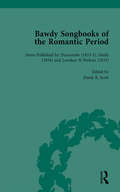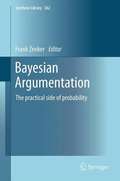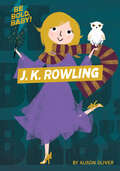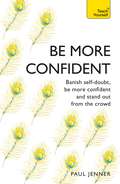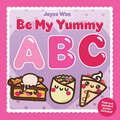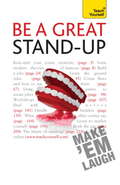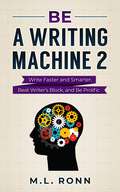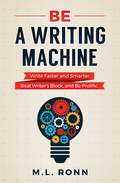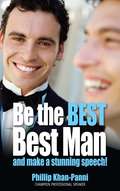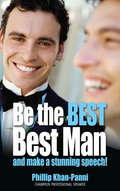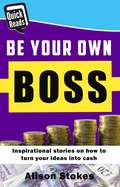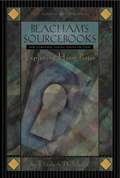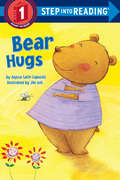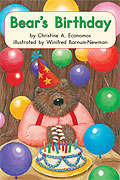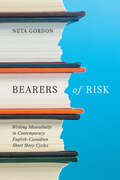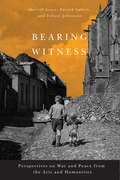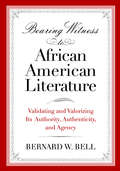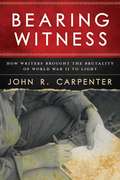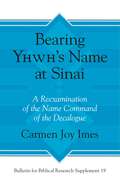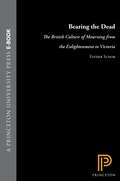- Table View
- List View
Bawdy Songbooks of the Romantic Period, Volume 4
by David Gregory Ed Cray Paul Watt Patrick Spedding Derek B ScottThe songbooks of the 1830-40s were printed in tiny numbers, and small format so they could be hidden in a pocket, passed round or thrown away.Collectors have sought ‘these priceless chapbooks’, but only recently a collection of 49 songbooks has come to light. This collection represents almost all of the known songbooks from the period.
Bayesian Argumentation: The practical side of probability (Synthese Library #362)
by Frank ZenkerRelevant to, and drawing from, a range of disciplines, the chapters in this collection show the diversity, and applicability, of research in Bayesian argumentation. Together, they form a challenge to philosophers versed in both the use and criticism of Bayesian models who have largely overlooked their potential in argumentation. Selected from contributions to a multidisciplinary workshop on the topic held in Sweden in 2010, the authors count linguists and social psychologists among their number, in addition to philosophers. They analyze material that includes real-life court cases, experimental research results, and the insights gained from computer models. The volume provides, for the first time, a formal measure of subjective argument strength and argument force, robust enough to allow advocates of opposing sides of an argument to agree on the relative strengths of their supporting reasoning. With papers from leading figures such as Michael Oaksford and Ulrike Hahn, the book comprises recent research conducted at the frontiers of Bayesian argumentation and provides a multitude of examples in which these formal tools can be applied to informal argument. It signals new and impending developments in philosophy, which has seen Bayesian models deployed in formal epistemology and philosophy of science, but has yet to explore the full potential of Bayesian models as a framework in argumentation. In doing so, this revealing anthology looks destined to become a standard teaching text in years to come.
Bayesian Speech and Language Processing
by Shinji Watanabe Jen-Tzung ChienWith this comprehensive guide you will learn how to apply Bayesian machine learning techniques systematically to solve various problems in speech and language processing. A range of statistical models is detailed, from hidden Markov models to Gaussian mixture models, n-gram models and latent topic models, along with applications including automatic speech recognition, speaker verification, and information retrieval. Approximate Bayesian inferences based on MAP, Evidence, Asymptotic, VB, and MCMC approximations are provided as well as full derivations of calculations, useful notations, formulas, and rules. The authors address the difficulties of straightforward applications and provide detailed examples and case studies to demonstrate how you can successfully use practical Bayesian inference methods to improve the performance of information systems. This is an invaluable resource for students, researchers, and industry practitioners working in machine learning, signal processing, and speech and language processing.
Be Bold, Baby: J.K. Rowling (Be Bold, Baby)
by Alison OliverIntroduce your little ones to bold women like J.K. Rowling and important values like imagination, always being yourself, and being a good friend with this book series!Celebrate J. K. Rowling&’s most motivational and powerful moments, with quotes from the literary genius responsible for the creation of Harry Potter and vibrant illustrations by Alison Oliver (Moon; BabyLit series.)Be imaginative. Be a friend. Be you. Look for the companion volumes, Be Bold, Baby: Michelle Obama; Be Bold Baby: Oprah Winfrey; and Be Bold Baby: Sonia Sotomayor.
Be More Confident: Banish self-doubt, be more confident and stand out from the crowd
by Paul JennerSelf-confidence is a crucial ingredient in your personal skill-set; whether you need to demonstrate your aptitude at work or feel calmer and less anxious in social situations, being able to express yourself with confidence and appear at ease is well within your reach.Be More Confident brings the social networking strategies of the business and professional world to your personal life, helping you to overcome shyness, win friends and make an impact in every social situation. It uses proven techniques, interactive tools, case studies and motivational advice to help you communicate better, and relate to others in a natural way. If you've always been a little shy, it will give you practical help on everything from body language to great conversation openers. Covering work, home, relationships, social media and every other area of your daily routine, this practical, outcome-focused book will help you you feel better not only about yourself, but about the way in which you talk to people, make friends, and make an impression.ABOUT THE SERIESPeople have been learning with Teach Yourself since 1938. With a vast range of practical, how-to guides covering language learning, lifestyle, hobbies, business, psychology and self-help, there's a Teach Yourself book for whatever you want to do. Join more than 60 million people who have reached their goals with Teach Yourself, and never stop learning.
Be More Confident: Banish self-doubt, be more confident and stand out from the crowd
by Paul JennerSelf-confidence is a crucial ingredient in your personal skill-set; whether you need to demonstrate your aptitude at work or feel calmer and less anxious in social situations, being able to express yourself with confidence and appear at ease is well within your reach.Be More Confident brings the social networking strategies of the business and professional world to your personal life, helping you to overcome shyness, win friends and make an impact in every social situation. It uses proven techniques, interactive tools, case studies and motivational advice to help you communicate better, and relate to others in a natural way. If you've always been a little shy, it will give you practical help on everything from body language to great conversation openers. Covering work, home, relationships, social media and every other area of your daily routine, this practical, outcome-focused book will help you you feel better not only about yourself, but about the way in which you talk to people, make friends, and make an impression.ABOUT THE SERIESPeople have been learning with Teach Yourself since 1938. With a vast range of practical, how-to guides covering language learning, lifestyle, hobbies, business, psychology and self-help, there's a Teach Yourself book for whatever you want to do. Join more than 60 million people who have reached their goals with Teach Yourself, and never stop learning.
Be My Yummy ABC: A Food-Centric ABC Picture Book for Valentine's Day
by Joyce WanA love letter? A yummy treat? A fun fold-out alphabet poster? Be My Yummy ABC is ALL THREE! This cozy picture book with irresistible art and a sparkly cover that opens up into a poster of the alphabet is perfect for Valentine's Day, baby shower gifts, and story time, too!Be my warm APPLE pie, just you and me; My BURRITO baby, snug as can be; My twirly, curly CREPE supreme; My swirly, whirly DOSA dream.This adorable book featuring scrumptious treats from all over is the one new alphabet book that small kids will simply eat up! Beloved picture book creator Joyce Wan has cooked up a list of yummy foods from A to Z and brought them to life with adorable faces and rhymes. It&’s an international smorgasbord of foods from more than fifteen different countries, each with a loving &“BE MINE&” message.
Be a Good Soldier
by Jennifer FraserIn the modern era, children experiencing grief were encouraged to dry their tears and 'be good soldiers.' How was this phenomenon interrogated and deconstructed in the period's literature? Be a Good Soldier initiates conversation on the figure of the child in modernist novels, investigating the demand for emotional suppression as manifested later in cruelty and aggression in adulthood.Jennifer Margaret Fraser provides sophisticated close readings of key works by Joseph Conrad, Virginia Woolf, and James Joyce, among others who share striking concerns about the concept of infantry -- both as a collection of infants, and as foot soldiers of war. A phenomenon associated traditionally with Freud, Fraser instead uses a unique, Derridean theoretical prism to provide new ways of understanding modernist concerns with power dynamics, knowledge, and meaning. Be a Good Soldier establishes a pioneering, nuanced vocabulary for further historical and cultural inquiries into modernist childhood.
Be a Great Stand-up: How to master the art of stand up comedy and making people laugh
by Logan MurrayLogan Murray has successfully taught the techniques of stand-up comedy to thousands, and in this book he distills his years of experience into the essential skills for a great and enjoyable performance. He will help you find your own creative streak and your funny side, build the confidence to deliver, and explain the finer details of stagecraft, from dealing with hecklers to coping with props. There is a full guide to the practicalities, from finding gigs to securing an agent, with plenty of valuable hints, tips and advice. Drawing on Logan's years of teaching and his own successful stand-up career, with top tips from some of the most well-known people in the business, it is guaranteed to bring a smile to both your face and that of your future audience.NOT GOT MUCH TIME?One, five and ten-minute introductions to key principles to get you started.AUTHOR INSIGHTSLots of instant help with common problems and quick tips for success, based on the author's many years of experience.TEST YOURSELFTests in the book and online to keep track of your progress.EXTEND YOUR KNOWLEDGEExtra online articles at www.teachyourself.com to give you a richer understanding of stand-up comedy.FIVE THINGS TO REMEMBERQuick refreshers to help you remember the key facts.TRY THISInnovative exercises illustrate what you've learnt and how to use it.
Be a Writing Machine 2: Write Faster and Smarter, Beat Writer's Block, and Be Prolific (Author Level Up #19)
by M.L. RonnThe sequel to the bestselling productivity book for writers—available in ebook, paperback, large print, and audiobook! OK, so you're ready to write faster and smarter, beat writer's block, and be prolific. Now, the real struggle begins. Since writing the first Be a Writing Machine, bestselling author and YouTuber M.L. Ronn has traveled across the world, teaching writers how to unlock new levels of creativity. Many books and many questions later, he gathered his new learnings into a sequel. He uses this advice daily to boost his word counts—and it has made him an even FASTER writer since the original Be a Writing Machine. Write 1 million words per year (or more) Discover 3 ways to write on your phone and reclaim wasted time Turbocharge your writing sessions with dictation and other cutting-edge technology Harmonize writing with your family and work Harness the power of writing quotas—the most underrated writing tool Why you should never start your writing sessions with the two sworn enemies of productivity Balance writing, business, and marketing Learn how to STOP writing sloppy Use procrastination to your advantage This book is your last obstacle to finally getting all those ideas out of your head. It will help you "die empty." Ready to capture your new prolific future with more readers, book sales, and connections? Click the buy button now to grab your copy of Be a Writing Machine 2 today! V1.0
Be a Writing Machine: Write Faster and Smarter, Beat Writer's Block, and Be Prolific (Author Level Up #3)
by M.L. RonnThe no-nonsense, no BS guide to becoming a prolific author--available in ebook, paperback, and audiobook! Do you want to write a lot of novels, but can't improve your writing speed? Writing fast is the most important skill you can develop as a writer. While it seems hard to hit high word counts, the secrets are easier than you think.In this writer's guide, prolific author M.L. Ronn pulls back the curtain on the process that he uses to write 6-8 novels a year. He has kept this pace while juggling responsibilities as a husband, father, manager at a Fortune 100 company, and a law school student. The result is a catalogue of over 40 books and counting. Create a writing habit that suits your lifestyle Use writing apps on your phone to double your word count Learn strategies to beat writer's block forever Discover how to write smarter by using unorthodox strategies used by the masters This book is the only thing standing between you and your writing dreams. Write faster, write smarter, beat writer's block, and be the prolific author you've always wanted to be! V1.0
Be the Best, Best Man & Make a Stunning Speech!
by Phillip Khan-PanniThe focus of this book is on that brief but terrifying prospect: the Best Man's speech. The book includes techniques for using stories, jokes and quotations that will lift your speech well above the bare necessities, helping you not only to make the speech, but also to enjoy it. More than just a guide to the Best Man's speech, this book is a one-stop guide to being a really effective, all round, Best Man. Above all its purpose is to help you enjoy your role as Best Man and to make it an occasion that honours the groom and his chosen bride.Contents: 1. Your complete guide to being best man 2. Myths and legends 3. Duties of the best man 4. Planning your speech 5. Preparation 6. Writing the speech in eight steps 7. Things to avoid 8. The big day 9. Delivery 10. Anecdotes 11. Jokes and quotes 12. Traditional and celebrity sayings 13. Sample toasts - beginnings, middles and endings 14. Mixed marriages Sample speeches
Be the Best, Best Man and Make a Stunning Speech!
by Phillip Khan-PanniThe focus of this book is on that brief but terrifying prospect: the Best Man's speech. <P><P>The book includes techniques for using stories, jokes and quotations that will lift your speech well above the bare necessities, helping you not only to make the speech, but also to enjoy it. More than just a guide to the Best Man's speech, this book is a one-stop guide to being a really effective, all round, Best Man. <P>Above all its purpose is to help you enjoy your role as Best Man and to make it an occasion that honours the groom and his chosen bride.
Be your Own Boss
by Alison StokesFour star-crossed people in a Dublin summer, with a match-making mother to spice up the sometimes poignant and sometimes hilarious tale even further. Should they all settle for less, taking life's little disappointments on the chin, or chase their dreams of love and happiness? The question is, are they ready for it, or not? Sometimes you've got to forgive the person you were to be the person you can be.... How do you find the faith to love again? Take Caddy. She's blonde and beautiful, and has a wonderful man who loves her....what could be more perfect? And yet she's running away from him, and from a secret and painful past. Then there's feisty, tender Roz who has to make corn cream commercials sound romantic and who yearns to be a writer. That's after she finds a man and has a baby, of course... She can't help feeling it was all meant to be easier. And Tom who dreams of being a famous photographer but who ends up selling mobile phones and thinking about the son he never sees. Not to mention gorgeous Dan, a famous actor...He only wants Caddy.... Why doesn't she want him?
Beacham's Sourcebook for Teaching Young Adult Fiction: Exploring Harry Potter
by Elizabeth D. SchaferTextbook for teaching children and teens about the Harry Potter series with projects, activities, and discussions about the first 3 HP books on a chapter-by-chapter basis.
Bear Hug
by Alyssa Satin CapucilliBaby Bear asks his parents for all kinds of hugs--wet hugs, dry hugs, fly-up-to-the-sky hugs--in search of the best hug of all. Illustrations.
Bear Is Awake!: An Alphabet Story
by Hannah E. HarrisonIn this delightfully different alphabet book from the creator of Extraordinary Jane, a curious bear makes a new friend.Suddenly "awake" in the middle of winter, a "big bear" explores a "cozy cabin," which Bear of course "enters excitedly." But the cabin isn't empty--a little girl lives there. So begins an unlikely friendship and an unexpected adventure as the girl attempts to figure out what a bear is supposed to be doing in the winter. (Hint: It's not eating pancakes or visiting the library!)With her trademark humor and warmth, Hannah E. Harrison puts her own irresistible spin on the classic alphabet book. The result is a story families will treasure for years to come.
Bear's Birthday (Fountas & Pinnell LLI Green #Level I, Lesson 93)
by Christine EconomosFountas and Pinnell Leveled Literacy Intervention Green System -- 1st Grade
Bearers of Risk: Writing Masculinity in Contemporary English-Canadian Short Story Cycles
by Neta GordonThe short story and the short story cycle have long been considered a marginal genre, free to make room for fresh or risk-taking voices. But in thematizing masculinity in crisis, the genre uses the premise of the marginal to elevate recuperative masculinity politics and nostalgia for traditional patriarchy.Despite the scholarly tendency to link marginal genres and marginalized voices, features of the CanLit infrastructure – including genre criticism and literary prize culture – are complicit in normalizing hegemonic masculinity and the Settler colonial project. Bearers of Risk examines how male Canadian writers mobilize the early twenty-first-century short story cycle as an illustration of post-9/11 recuperative masculinity politics, exposing the tendency to position White, heteronormative men’s viewpoints as objective. Neta Gordon introduces the civil bearer of risk, a figure who comprehends the position of men as being marked by or for failure, and who reasserts masculine authority as civil duty towards community. This book looks at contemporary experimental short story cycles, debut cycles by ethnically minoritized and immigrant writers, and cycles unified by setting, whether suburban, urban, or rural.Bearers of Risk unsettles popular notions of the inherent outsider status of the short story cycle while also scrutinizing expressions of recuperative masculinity politics through which men assert their right to reclaim the centre.
Bearing Witness
by Sherrill Grace Tiffany Johnstone Patrick ImbertAs the centenary of the Great War approaches, citizens worldwide are reflecting on the history, trauma, and losses of a war-torn twentieth century. It is in remembering past wars that we are at once confronted with the profound horror and suffering of armed conflict and the increasing elusiveness of peace. The contributors to Bearing Witness do not presume to resolve these troubling questions, but provoke new kinds of reflection. They explore literature, the arts, history, language, and popular culture to move beyond the language of rhetoric and commemoration provided by politicians and the military. Adding nuance to discussions of war and peace, this collection probes the understanding and insight created in the works of musicians, dramatists, poets, painters, photographers, and novelists, to provide a complex view of the ways in which war is waged, witnessed, and remembered. A compelling and informative collection, Bearing Witness sheds new light on the impact of war and the power of suffering, heroism and memory, to expose the human roots of violence and compassion. Contributors include Heribert Adam (Simon Fraser University), Laura Brandon (Carleton University), Mireille Calle-Gruber (Université La Sorbonne Nouvelle), Janet Danielson (Simon Fraser University), Sandra Djwa (emeritus, Simon Fraser University), Alan Filewod (University of Guelph), Sherrill Grace (University of British Columbia), Patrick Imbert (University of Ottawa), Tiffany Johnstone (PhD Candidate, University of British Columbia), Martin Löschnigg (Graz University), Lauren Lydic (PhD, University of Toronto), Conny Steenman Marcusse (Netherlands), Jonathan Vance (University of Western Ontario), Aritha van Herk (University of Calgary), Peter C. van Wyck (Concordia University), Christl Verduyn (Mount Allison University), and Anne Wheeler (filmmaker).
Bearing Witness to African American Literature: Validating and Valorizing Its Authority, Authenticity, and Agency
by Bernard W. BellAn interdisciplinary, code-switching, critical collection by revisionist African American scholar and activist Bernard W. Bell.
Bearing Witness: How Writers Brought the Brutality of World War II to Light
by John R. CarpenterIt has been said that during times of war, the Muses fall silent. However, anyone who has read the major figures of mid-twentieth-century literature—Samuel Beckett, Richard Hillary, Norman Mailer, Albert Camus, Jean-Paul Sartre, and others—can attest that it was through writing that people first tried to communicate and process the horrors that they saw during one of the darkest times in human history even as it broke out and raged on around them.In Bearing Witness, John Carpenter explores how across the world those who experienced the war tried to make sense of it both during and in its immediate aftermath. Writers such as Alexander Solzhenitsyn and Theodore Plievier questioned the ruling parties of the time based on what they saw. Correspondents and writer-soldiers like John Hersey and James Jones revealed the chaotic and bloody reality of the front lines to the public. And civilians, many of who remain anonymous, lent voice to occupation and imprisonment so that those who didn’t survive would not be forgotten. The digestion of a cataclysmic event can take generations. But in this fascinating book, Carpenter brings together all those who did their best to communicate what they saw in the moment so that it could never be lost.
Bearing Witness: Perspectives on War and Peace from the Arts and Humanities (LIT004080)
by Sherrill Grace Tiffany Johnstone Patrick ImbertAs the centenary of the Great War approaches, citizens worldwide are reflecting on the history, trauma, and losses of a war-torn twentieth century. It is in remembering past wars that we are at once confronted with the profound horror and suffering of armed conflict and the increasing elusiveness of peace. The contributors to Bearing Witness do not presume to resolve these troubling questions, but provoke new kinds of reflection. They explore literature, the arts, history, language, and popular culture to move beyond the language of rhetoric and commemoration provided by politicians and the military. Adding nuance to discussions of war and peace, this collection probes the understanding and insight created in the works of musicians, dramatists, poets, painters, photographers, and novelists, to provide a complex view of the ways in which war is waged, witnessed, and remembered. A compelling and informative collection, Bearing Witness sheds new light on the impact of war and the power of suffering, heroism and memory, to expose the human roots of violence and compassion. Contributors include Heribert Adam (Simon Fraser University), Laura Brandon (Carleton University), Mireille Calle-Gruber (Université La Sorbonne Nouvelle), Janet Danielson (Simon Fraser University), Sandra Djwa (emeritus, Simon Fraser University), Alan Filewod (University of Guelph), Sherrill Grace (University of British Columbia), Patrick Imbert (University of Ottawa), Tiffany Johnstone (PhD Candidate, University of British Columbia), Martin Löschnigg (Graz University), Lauren Lydic (PhD, University of Toronto), Conny Steenman Marcusse (Netherlands), Jonathan Vance (University of Western Ontario), Aritha van Herk (University of Calgary), Peter C. van Wyck (Concordia University), Christl Verduyn (Mount Allison University), and Anne Wheeler (filmmaker).
Bearing Yhwh’s Name at Sinai: A Reexamination of the Name Command of the Decalogue (Bulletin for Biblical Research Supplement)
by Carmen Joy ImesThe Name Command (NC) is usually interpreted as a prohibition against speaking Yhwh’s name in a particular context: false oaths, wrongful pronunciation, irreverent worship, magical practices, cursing, false teaching, and the like. However, the NC lacks the contextual specification needed to support the command as speech related. Taking seriously the narrative context at Sinai and the closest lexical parallels, a different picture emerges—one animated by concrete rituals and their associated metaphorical concepts. The unique phrase ns' shm is one of several expressions arising from the conceptual metaphor, election as branding, that finds analogies in high-priest regalia as well as in various ways of claiming ownership in the Ancient Near East, such as inscribed monuments, the use of seals, and the branding of slaves. The NC presupposes that Yhwh has claimed Israel by placing Yhwh’s own name on her. In this light, the first two commands of the Decalogue reinforce the two sides of the covenant declaration: “I will be your God; you will be my people.” The first expresses the demand for exclusive worship and the second calls for proper representation. As a consequence, the NC invites a richer exploration of what it means to be a people in covenant with Yhwh—a people bearing his name among the nations. It also points to what is at stake when Israel carries that name “in vain.” The image of bearing Yhwh’s name offers a rich source for theological and ethical reflection that cannot be conveyed nonmetaphorically without distortion or loss of meaning.
Bearing the Dead: The British Culture of Mourning from the Enlightenment to Victoria (Literature in History)
by Esther SchorEsther Schor tells us about the persistence of the dead, about why they still matter long after we emerge from grief and accept our loss. Mourning as a cultural phenomenon has become opaque to us in the twentieth century, Schor argues. This book is an effort to recover the culture of mourning that thrived in English society from the Enlightenment through the Romantic Age, and to recapture its meaning. Mourning appears here as the social diffusion of grief through sympathy, as a force that constitutes communities and helps us to conceptualize history.In the textual and social practices of the British Enlightenment and its early nineteenth-century heirs, Schor uncovers the ways in which mourning mediated between received ideas of virtue, both classical and Christian, and a burgeoning, property-based commercial society. The circulation of sympathies maps the means by which both valued things and values themselves are distributed within a culture. Delving into philosophy, politics, economics, and social history as well as literary texts, Schor traces a shift in the British discourse of mourning in the wake of the French Revolution: What begins as a way to effect a moral consensus in society turns into a means of conceiving and bringing forth history.
